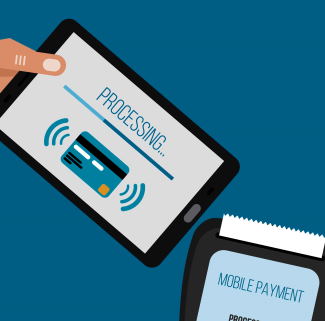In a world where nearly 1.5 billion people live in extreme poverty, digital cash transfers have the power to change lives. With just a few clicks on a smartphone or computer, money can be transferred instantly to anyone, anywhere in the world. This simple act can mean the difference between life and death for people living in poverty.
In recent years, digital cash transfer programs have been gaining traction as a way to combat poverty. These programs provide direct cash assistance to poor households, which can be used for anything from food and shelter to education and healthcare. By allowing people to meet their basic needs, digital cash transfers are helping to break the cycle of poverty and build a better future for millions of people worldwide.
How to accelerate digital cash transfers to the world’s poorest countries?
The world’s poorest countries are often underserved in terms of access to digital banking and payment systems, making it difficult for them to send or receive payments. As the global community looks for ways to help those in need, accelerating digital cash transfers has become a priority. Here are some steps that can be taken to support this effort:
-

Mobile payments with smartphone concept of communication technology
Use existing technologies such as mobile money. Mobile money services such as M-Pesa, WorldRemit, and TransferWise enable users to send money to Russia online. This technology is already widely used in many developing countries, so governments and aid organizations can quickly expand access to digital cash transfers by leveraging these platforms.
- Increase financial literacy. Financial literacy is essential to ensure that individuals are able to access and use digital banking services responsibly. Governments, NGOs, and other stakeholders can play an important role in providing educational resources and support to those who may need it the most.
- Invest in infrastructure development. Poor countries often lack adequate digital banking infrastructure, especially in rural areas where access may be limited or nonexistent. By investing in infrastructure development, such as building out networks of mobile money agents or establishing local banks with online capabilities, governments and aid organizations can help expand access to digital payments across the entire country.
- Remove barriers to entry for new players. Regulations that limit competition can prevent new companies from entering the market, which means fewer options for citizens in need. Governments can help promote competition by reducing barriers to entry and encouraging new companies to enter the space.
- Leverage existing networks of microfinance institutions. Microfinance institutions often have established networks that provide access to digital payments in underserved areas, especially rural areas that lack adequate banking infrastructure. By leveraging these networks, governments and aid organizations can expand access to digital cash transfers quickly and efficiently.
By taking these steps, governments, NGOs, and other stakeholders can help ensure that everyone can take advantage of digital banking services, regardless of location or financial circumstances. This will enable those in need worldwide to receive the assistance they require more easily and efficiently than ever before.
Responding to the crisis with digital payments for social protection
Digital payments create a more effective, efficient, and targeted way of providing social protection – cash transfers, subsidies, and in-kind benefits – to those most affected by the crisis. Digital transfers are faster to execute, can be tailored to the individual or household needs, and can reduce administrative costs and fraud. In addition, digital payments provide an opportunity for governments to improve the lives of their citizens not only during times of crisis but also in delivering long-term social protection plans.
For instance, refugees who often lack government-issued identification may find it difficult to access traditional financial services such as bank accounts or credit cards. This is where digital payments can come into play; by using mobile banking solutions that use biometric authentication, refugees can quickly and securely access government cash transfers, subsidies, and other benefits without worrying about the security of their financial assets.

Moreover, digital payments can facilitate public-private partnerships supporting vulnerable populations during a crisis. For example, governments may partner with tech companies or NGOs to develop digital solutions that utilize mobile banking platforms or payment cards to deliver social protection such as food aid, educational materials, or medical supplies directly to those in need. This helps ensure that these resources reach the intended recipients and reduces costs associated with traditional distribution methods, including transportation and storage.
In addition to providing greater efficiency and improved targeting of social protection initiatives during times of crisis, digital payments may also help governments better monitor the effectiveness of their programs and identify areas for improvement. For example, with digital payments, governments can track how funds are being spent and gain insights into consumer behavior that can inform their decision-making process. With this information, governments can take targeted actions to improve the effectiveness of social protection initiatives and ensure that resources are used more equitably.
Overall, the use of digital payments for social protection during times of crisis has the potential to provide greater efficiency, improved results tracking capabilities, and better targeting of resources – all critical elements for effective response management. Moreover, by leveraging these tools along with other strategies such as public-private partnerships and data analytics, governments can effectively address vulnerable populations’ needs while creating long-term impactful change.
 Your support is literally life changing and life saving. Thank you for standing alongside us and the thousands of survivors who need help to leave and recover, we couldn’t do it without you.
Your support is literally life changing and life saving. Thank you for standing alongside us and the thousands of survivors who need help to leave and recover, we couldn’t do it without you.